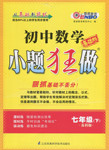Runners in a relay race pass a stick in one direction. However, merchants(商人) passed silk, gold, fruit, and glass along the Silk Road in more than one direction. They earned their living by traveling the famous Silk Road.
The Silk Road was not a simple trading network. It passed through thousands of cities and towns. It started from eastern China, across Central Asia and the Middle East, and ended in the Mediterranean Sea. It was used from about 200 B.C. to about 1300 A.D., when sea travel offered new routes. It was sometimes called the world’s longest highway. However, the Silk Road was made up of many routes, not one smooth path. They passed through what are now 18 countries. The routes crossed mountains and deserts and had many dangers of hot sun, deep snow and even battles. Only experienced traders could return safe.
The Silk Road got its name from its most prized product. Silk could be used like money to pay taxes or buy goods. But the traders carried more than just silk. Gold, silver, and glass from Europe were much found in the Middle East and Asia. Horses traded from other areas changed farming practices in China. Indian merchants traded salt and other valuable goods. Chinese merchants traded paper, which produced an immediate effect on the West. Apples traveled from central Asia to Rome. The Chinese had learned to graft(嫁接) different trees together to make new kinds of fruit. They passed this science on to others, including the Romans. The Romans used grafting to grow the apple. Trading along the Silk Road led to world-wide business 2,000 years before the World Wide Web.The people along the Silk Road did not share just goods. They also shared their beliefs. The Silk Road provided pathways for learning, diplomacy(外交), and religion (宗教).
1. It’s probable that traders along the Silk Road needed ____________.
A. to remember the entire trade route
B. to deal with a lot of difficulties
C. to receive certain special training
D. to know the making of products
2.The Silk Road became less important because ____________.
A. it was made up of different routes
B. silk trading became less popular
C. people needed fewer foreign goods
D. sea travel provided easier routes
3.What is Paragraph 3 mainly about?
A. Silk was the most prized product.
B. The Silk Road led to world-wide business.
C. People traded many goods along the route.
D. The Silk Road used to be the world’s longest highway.
4.New technologies could travel along the Silk Road because people ___________.
A. traded goods along the route
B. shared each other’s beliefs
C. learned from one another
D. earned their living by traveling
5.What is the best title for the passage?
A. The Silk Road: East Meets West
B. The Silk Road: Past and Present
C. The Silk Road: Routes Full of Dangers
D. The Silk Road: Pathways for Learning

 小题狂做系列答案
小题狂做系列答案